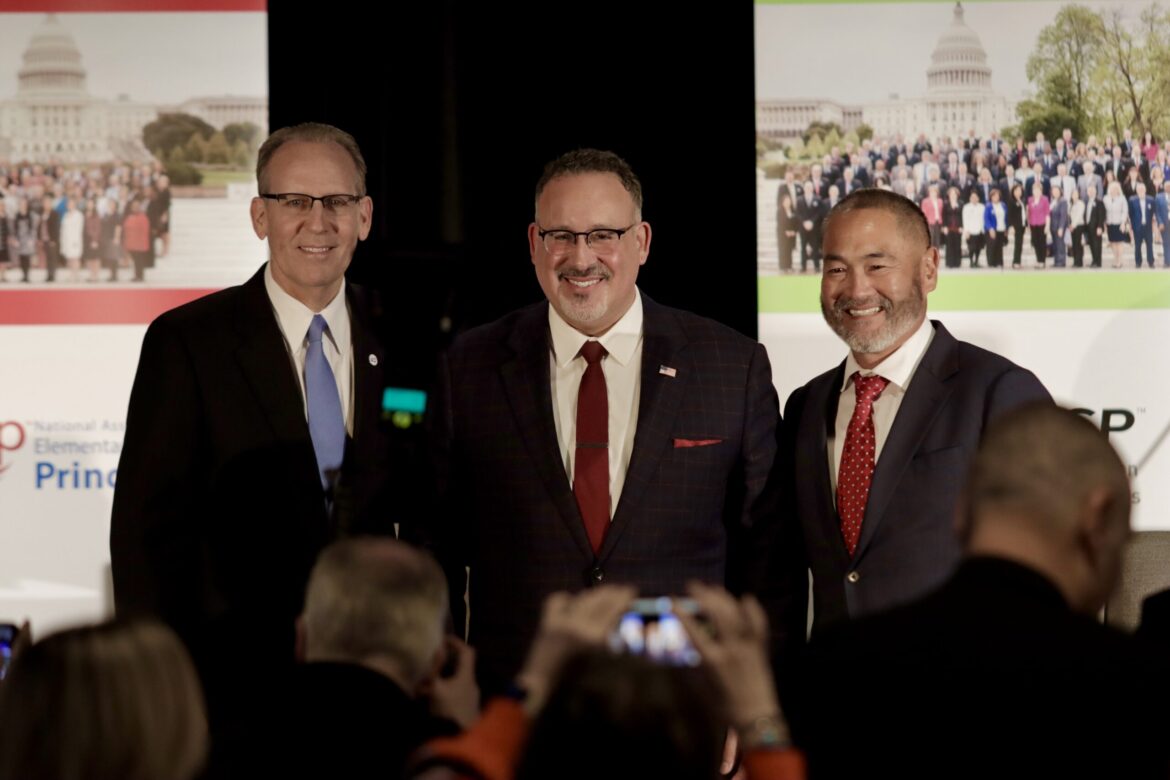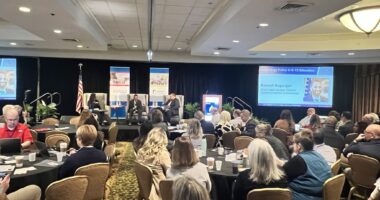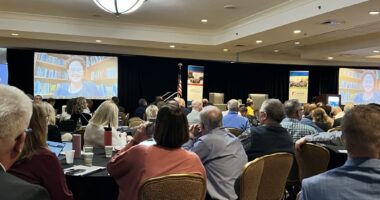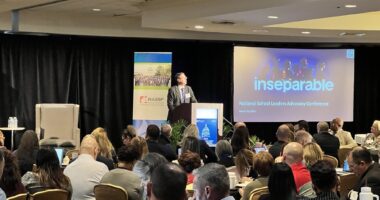Evolving Education: A Focus on Results, Not Rhetoric
At the National School Leaders Advocacy Conference, U.S. Secretary of Education Miguel Cardona brought this message to more than 400 school leaders: The U.S. Department of Education—with Cardona at the helm—is focused on results, not rhetoric.

From left to right: NAESP Executive Director L. Earl Franks, Ed.D., CAE; Education Secretary Miguel Cardona; and National Association of Secondary School Principals CEO Ronn Nozoe at the closing session of the conference.
A champion for schools, educators, and students, U.S. Secretary of Education Miguel Cardona knows the impact school leaders make on their school communities. At the 2024 National School Leaders Advocacy Conference, Cardona brought this message to more than 400 K-12 principals and assistant principals during the event’s closing session: The U.S. Department of Education—with Cardona at the helm—is focused on results, not rhetoric.
Cardona understands firsthand how important results-focused leadership is. A former NAESP member and a 2012 NAESP National Distinguished Principal, Cardona started his career in education as a public school teacher and elementary school principal before serving as Connecticut’s Commissioner of Education and now as the 12th U.S. Secretary of Education. He knows the feeling of being asked to do more with less, and it’s one of the drivers behind his work to support schools, students, and staff—as well as the administrators who lead them.
“Principals know how to solve problems in our schools,” Cardona said. “What we need is the will and resources to back you up. It’s top of mind for me in what I fight for—getting support for people who are doing the work and investing in what we know works.”
Cardona’s remarks highlighted several key issues facing our education system today that have broader societal implications. His focus on supporting educators, addressing mental health, and providing adequate resources underscores the challenges—and opportunities—ahead.
Some of those challenges are the student and educator mental health crises, sustainable funding options when American Rescue Plan funds go away, and educator shortages.
Making Mental Health a Priority
At NAESP, we know that mental health needs are always top of mind for school leaders, who need the resources and support to make sure every kid is cared for.
When asked what his vision for long-term mental health support was, Cardona said that mental health is a continuum that starts with having a good Tier I program where children feel accepted and have caring adults around them. Then it involves ensuring students have access to good cocurricular activities like arts and music. And when students have additional needs or trauma, we need to provide educators with the training they need to help theses students in trauma-informed ways. If students need more help, said Cardona, we need to have sufficient number of school counselors and wraparound services.
All of these supports add up to improved mental health for students and staff, he said.
Cardona noted that the department is also focused on ending the stigma attached to seeking out mental health supports, making sure the federal budget includes adequate funding for resources and support in schools and communities, and creating technical guidance on mental health—something the U.S. Department of Education started doing in recently, in 2021.
Revolutionizing Education
“We have an opportunity in the country to revolutionize the role of education,” Cardona said. “Education is the foundation for the country’s growth.”
As such, Cardona outlined priorities like making sure kids can read, ensuring equitable access to mental health supports and resources, and focusing on college and career pathways.
He didn’t forget support for teachers, either. Teachers make 24 percent less than other professions with similar degrees. This pay gap contributes to the teacher shortage crisis plaguing schools across the country. Without competitive pay and adequate support, fewer college graduates enter the teaching profession, exacerbating staffing shortages.
The implications are far-reaching: larger class sizes, less individualized instruction, and overstressed educators trying to fill the gaps. Providing better pay will help strengthen the talent pipeline, improve learning outcomes for students, and demonstrate that we as a country value education.
Cardona identified the ABCs of teaching—agency, better working conditions, and competitive salaries—that can help make the field of education more attractive to teachers and aspiring educators. And it’s school leaders who can help evolve the education system to better meet the changing needs of everyone in the school community.
“When we trust our educators, we see gains,” said Cardona. “We’ve seen more this past year than the previous 20 years combined.”
Leading into the culminating event of the 2024 National School Leaders Advocacy Conference—Capital Hill Day—where NAESP and NASSP school leaders will tell their stories and advocate on behalf of their peers in the principalship, Cardona offered this idea: “If we’re not cheering for the profession, who will?” asked Cardona.
Share your voice using #PrincipalsAdvocate and join NAESP in cheering on the profession and those who so passionately support school leaders, educators, students, and schools.
Krysia Gabenski is editorial director at NAESP.




